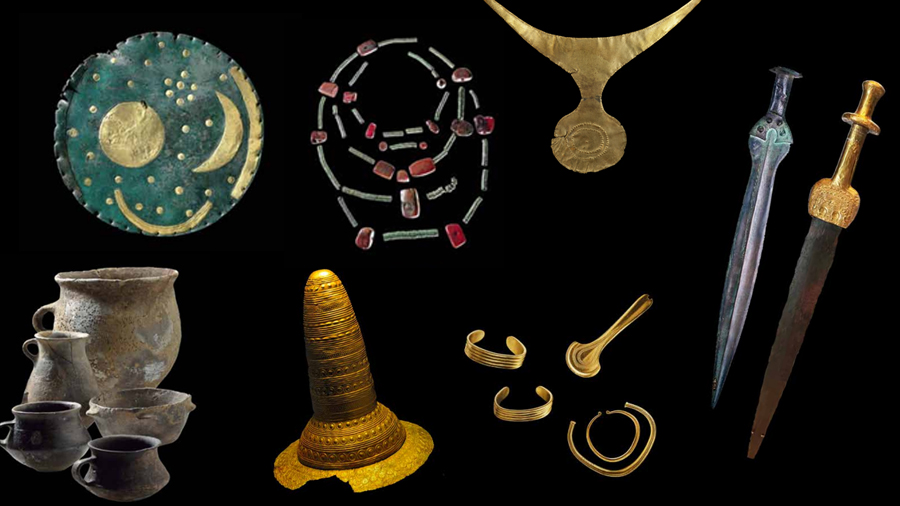UAB research at the MARQ exhibition on the first kingdoms of prehistoric Europe
The "Dinastías" exhibition, curated by the researcher of the Department of Prehistory Roberto Risch, brings together a sample of object never seen before in Spain thanks to the collaboration of twenty European museums, and can be visited at the Archaeological Museum of Alicante from 26 March to 13 October. The archaeological, palaeogenetic and palaeoconomic work of UAB researchers on the prehistoric societies of the Bronze Age in continental Europe has been key in the organisation of this exhibition.

"Dinastías" will exhibit 482 pieces from 21 museums and museum institutions in Spain, Hungary, Slovakia, Germany, Czech Republic, Poland, Belgium, Portugal and Denmark. These objects, never before exhibited in Spain together, and with some of the most important ones shown for the first time in Spain, belong to the first state-societies that emerged in continental Europe around 2200 BCE, at the beginning of the Bronze Age: El Argar (southeast of the Iberian Peninsula), Unetice (Czech Republic, central Germany and Slovakia) and Otomani-Füzesaboni (Romania and Hungary). The exhibition allows not only to appreciate masterpieces of the craftsmanship of the period, but also to understand how those first societies arose, who their creators were, how their political, economic and social organisation was built and how they related to each other.
Among the most exceptional pieces of the exhibition are the "treasure" of Téglás (Hungary), the grave goods of the princely mound of Leubingen (Germany), the Argaric sword of Guadalajara, or the golden diadem, also Argaric, of Caravaca de la Cruz. In addition, for the first time in Spain the celestial disc of Nebra, the oldest realistic representation of the sky in the world (1700 BCE), will be on display by means of an exact reproduction. Also on display will be pieces from the 19th century excavations carried out by the Siret brothers in Almeria and Murcia, which have been in the Royal Museums of Art and History of Belgium for the past 120 years.
"The exhibition allows us to rediscover a society and a period of enormous importance for Western Europe which for a long time, due to military and political conflicts, have been forgotten," explains Roberto Risch, researcher at the UAB, "and this will help us understand how many aspects that are part of our reality began to take shape almost as soon as we were united in different parts of Europe, such as the institutionalization of war, social inequality, the appearance of political borders and competition for control of territories and their resources, and long-distance exchange".
Archaeologists Juan Antonio López Padilla (MARQ) and Janos Dani (Museum of Debrecen, Hungary) worked alongside Roberto Risch in the curation of the exhibition.
The UAB, key in the organisation and content of the exhibition
Roberto Risch, professor of Prehistory at the UAB, is member of the Research Group in Mediterranean Social Archaeoecology (ASOME), which carries out excavations at the Argaric sites of La Bastida, La Almoloya and La Tira del Lienzo (Murcia), where the group has made numerous discoveries; some of them, such as the princely tomb and the government building of La Almoloya, have highlighted the importance of the El Argar society as one of the first states in Europe. In addition, in recent years the research team has been conducting palaeogenetic and palaeoeconomic analyses at the sites of El Argar and Unetice, which have shed new light on how its inhabitants were related.
The ASOME team, together with other researchers from the Department of Geology of the UAB, has also been involved in the preparation of the exhibition catalogue. A total of 400 pages with informative articles that allow us to understand these first Bronze Age state-societies that marked a turning point in the history of Europe.